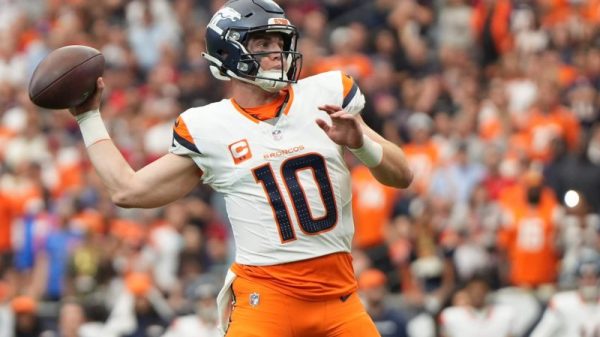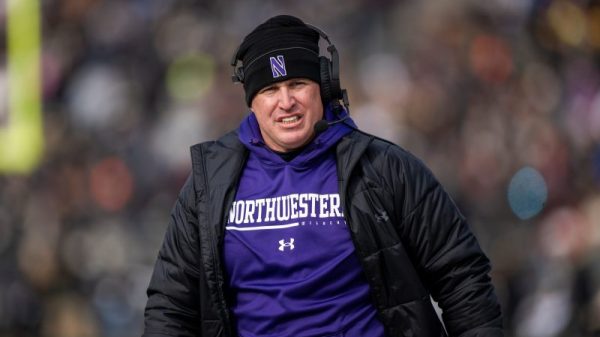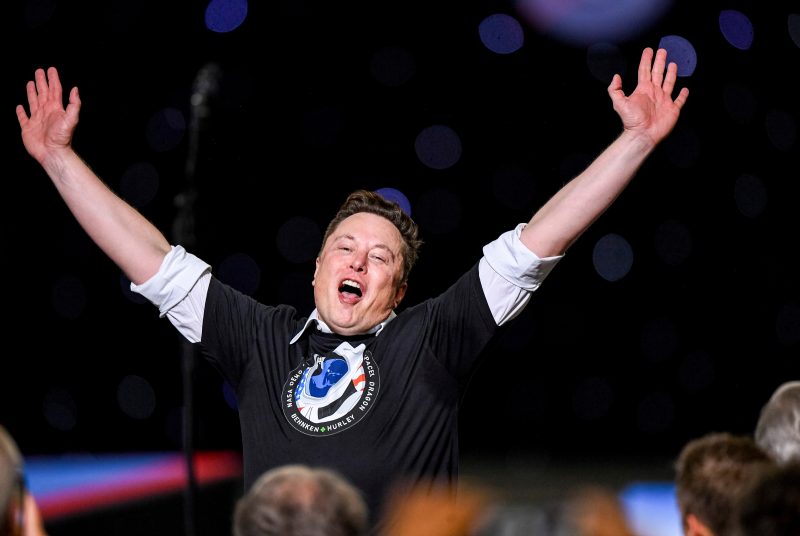Donald Trump’s insistence that he won the 2020 presidential election despite his having lost the 2020 presidential election put a lot of his allies in a bind.
Republican elected officials had to choose: Would they risk irritating an active, voluble set of Republican voters, or would they affirm the obvious election results? They at least had the option to stay quiet, an option of which many availed themselves. Media outlets such as Fox News couldn’t, having to pick between coddling Trump supporters by echoing Trump’s false claims about fraud or recognizing the reality of the election outcome.
Eventually a third option emerged. Trump allies and those otherwise interested in appealing to a right-wing audience decided that the election had been stolen not through unproven and unprovable voter fraud but instead through devious left-wing machinations. It was the media’s fault, for its coverage, for example. Arguments like that had the benefit of being vague and hard to measure, the rhetorical equivalent of attributing things to vibes.
There was one concrete claim made, however. The 2020 election was tainted or even determined by Facebook founder Mark Zuckerberg, whose contribution to a group called Center for Tech and Civic Life (CTCL) increased turnout in Democratic areas, making the difference for Joe Biden. This claim had multiple benefits, among them that it leverage right-wing hostility to large social media companies. The idea that “Zuckbucks” — as the contribution was dubbed — had cost Republicans the election became a mantra among those interested in piggybacking onto Trump’s feverish claims about the results.
On Tuesday, Elon Musk joined them.
Out of the blue, Musk shared an article on Twitter from October 2021. Published at the right-wing blog Federalist, the article alleges that the 2020 election was “bought by Mark Zuckerberg.” Its argument distills simply: Zuckerberg donated to an organization that worked to increase turnout, and that turnout altered the election results.
“Interesting article,” Musk said of the 18-month-old piece. “Perhaps CommunityNotes” — Twitter’s crowdsourced notation system — “can add further context & corrections.”
This is a common way in which Musk elevates right-wing rhetoric. He’ll often engage with fringe voices by declaring their commentary to be “concerning” — suggesting it’s just something worth mulling over. Here, Musk is suggesting that this heavily adjudicated assertion somehow demands new attention.
So let’s give it that attention.
CTCL did receive money from Zuckerberg and did use that money as it gave grants to local elections offices aimed at making it easier for voters to vote. Facebook has engaged in efforts to increase turnout before, including using prompts on its own platform. Here, though, Facebook had no role; it was CTCL’s implementation of an effort to bolster election systems aided by Zuckerberg’s personal money.
Much of the analysis in the Federalist article centers on the idea that these investments were larger in more-Democratic counties, using that as a peg for the argument that the investments were partisan and critical to Biden’s success.
But that argument is easily countered. CTCL’s investments were often in heavily Democratic areas — because those areas often have lower turnout rates. If you want to increase turnout, the smartest place to try to do so is places where turnout is lowest. In the United States, that’s often lower-income communities and communities that have high populations of Black and Hispanic residents, two groups that often vote heavily Democratic.
It has long been the case that non-White Americans vote less heavily than Whites. The Washington Post looked at this issue last week, using data from the Census Bureau. If we cluster every county in the United States to one of 10 buckets (deciles), ranging from the lowest percentage of White residents to the highest, you see that less-White counties consistently have lower turnout than more-White ones.
In 2018, the number of votes cast in the most heavily White decile of counties averaged about 52 percent of the voting-age population of citizens in the county. (This is admittedly an imperfect metric, including some people who are otherwise ineligible to vote.) In 2016, a presidential election year, the average in America’s least-White counties was only 53 percent. Even in a higher-turnout election, the least-White counties only turnout at about the same rate as the most-White ones did in a midterm.
In 2016, the tenth of counties with the lowest turnout (relative to the citizen voting-age population) was an average of 60 percent White. The tenth with the highest turnout was 80 percent White.
The higher the percentage of White people in a county, the higher the margin by which Trump won in 2020. Less-White often means more Democratic.
Importantly, those less-White counties are also more populous. On average, the gap between the size of the citizen-age population in 2020 and the votes cast for president was an average of nearly 90,000 in the least-White counties in the United States. In the most-White counties, the average was under 5,000.
Importantly, there isn’t a strong correlation between the turnout rate of a county in 2016 and how it voted. But the 16 counties that were in both the lowest turnout and highest population deciles (counties where 3.2 million votes were cast in 2020) were on average only 32 percent White. In the 43 counties where turnout was in the lowest decile and the population was in the second-lowest, an average of 60 percent of the population was White, but only 110,000 votes were cast. Targeting larger counties — and therefore getting more bang for your buck — means targeting counties with more non-White and more Democratic voters.
It’s worth stepping back for a moment and considering the argument Musk is elevating even on its own terms. The charge is that, by donating to CTCL, Zuckerberg “bought” the election. But even if CTCL and Zuckerberg were explicitly donating only to Democratic areas to turnout only Democratic voters, none of which is true … all they stand accused of is getting more eligible voters to vote.
As I wrote in July, the system as currently constituted makes it harder for young and poor people to vote: they move more often (meaning having to update registration information) and work less regular hours. It’s much easier to vote all the time if you’re a retiree that’s lived in the same place for 40 years. Since younger and poorer Americans are more likely to be non-White and more likely to be Democrats, the advantages some voters enjoy in the current system skew older, Whiter and Republican. If it was as easy for non-White and younger voters to vote as it is for older, Whiter ones, that would be a leveling of the playing field, not a skewing of it.
This is the argument that Musk asks us to consider. With rhetoric cobbled together to more easily defend Trump’s “stolen election” claims, the argument is that efforts to target low-turnout communities are centrally an effort to get more Democrats to vote — and therefore nefarious, even though it amounts to nothing more than allowing more eligible voters to vote.
Considered and rejected, Mr. Musk. Once again.



























